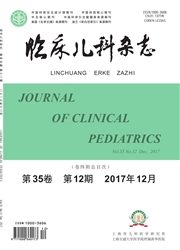

 中文摘要:
中文摘要:
目的调查成都地区儿童金黄色葡萄球菌定植/感染分离株的流行病学特征。方法 2004年1月—2009年4月,以成都市健康儿童、门诊呼吸道感染患儿和金黄色葡萄球菌感染住院患儿为研究对象,采集鼻拭子或感染部位标本进行培养,并对分离的金黄色葡萄球菌进行药敏实验,应用PCR方法检测菌株的PVL毒力基因和mecA耐药基因,对菌株进行多位点序列分析(MLST)。结果培养分离金黄色葡萄球菌定植株174株、感染株51株。门诊呼吸道感染患儿金葡菌的多重耐药率分别为,定植株59.3%,感染株52.9%;PVL基因阳性率分别为,定植株55.6%(15/27),感染株80.4%(41/51);mecA耐药基因阳性率分别为,定植株11.1%(3/27),感染株62.7%(32/51)。对健康儿童定植株以及感染株进行MLST分析,共发现33个ST类型,定植株以ST121、ST59和ST398为主,感染株以ST121、ST88和ST398为主;这些菌株属于15个克隆类型,以CC121、CC59和CC398为主。结论成都地区儿童金黄色葡萄球菌定植和感染分离株具有较高的PVL毒力基因和mecA耐药基因携带率,具有明显不同于其他地区的独特的遗传背景。
 英文摘要:
英文摘要:
Objective To evaluate antibiotic resistance profiling and molecular characteristics of Staphylococcus aureus strains in healthy or infected Children in Chengdu. Methods From January, 2004 to April, 2009, we isolated Staphylococcus aureus from hospitalized pediatric patients with S. aureus infection, outpatients with respiratory tract infections and healthy children in Chengdu and the antibiotic resistance was tested. PCR was used to assess presence/ absence of mecA and PVL genes, and muhilocus sequence typing (MLST) were performed. Results One hundred and seventy-four children carried S. aureus, and 51 children were infected with S. aureus. Sixteen isolates from patients with respiratory tract infections ( 59.2% ), and twenty seven isolates from S. aureus infected patients ( 52.9% ) were multi-resistant. Fifteen of those isolates from patients with respiratory tract infections (55.6%) and 41 (80.4%) isolates from the S. aureus. infected patients had positive PVL gene. Three (11.1%) of children with respiratory tract infections and 32 (62.7%) of the S. aureus infected patients had positive mecA gene. 33 STs were observed in all children. ST121, ST59 and ST398 were common in healthy children, while ST121, ST88 and ST398 were common in infected patients. Meanwhile, 15 clonal complexes were noted among carriers and infected patients, and the most frequent elonal complexes were CC121, CC59 and CC398. Conclusions There was a high prevalence of PVL genes and mecA genes in S. aureus isolates in Chengdu.
 同期刊论文项目
同期刊论文项目
 同项目期刊论文
同项目期刊论文
 期刊信息
期刊信息
